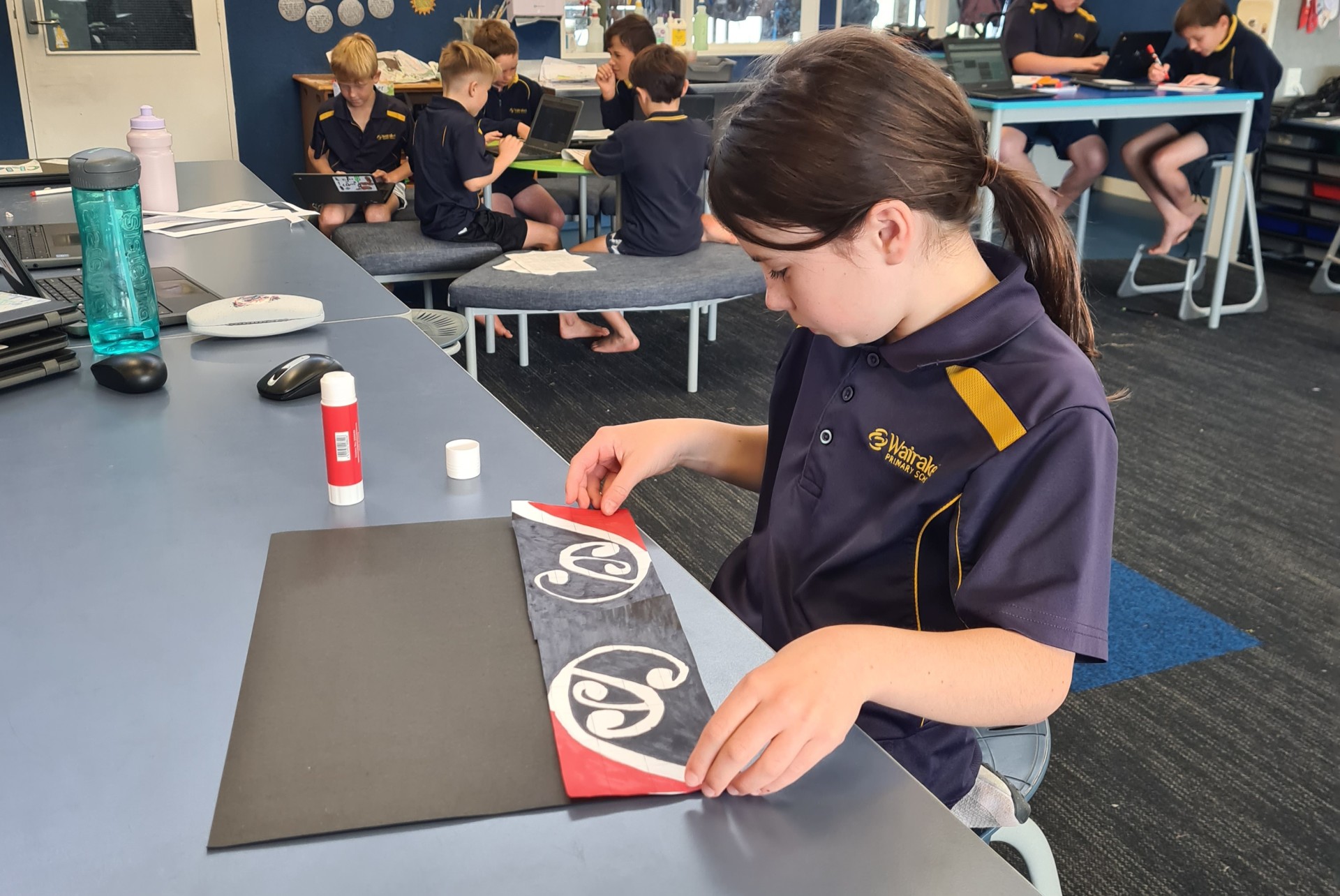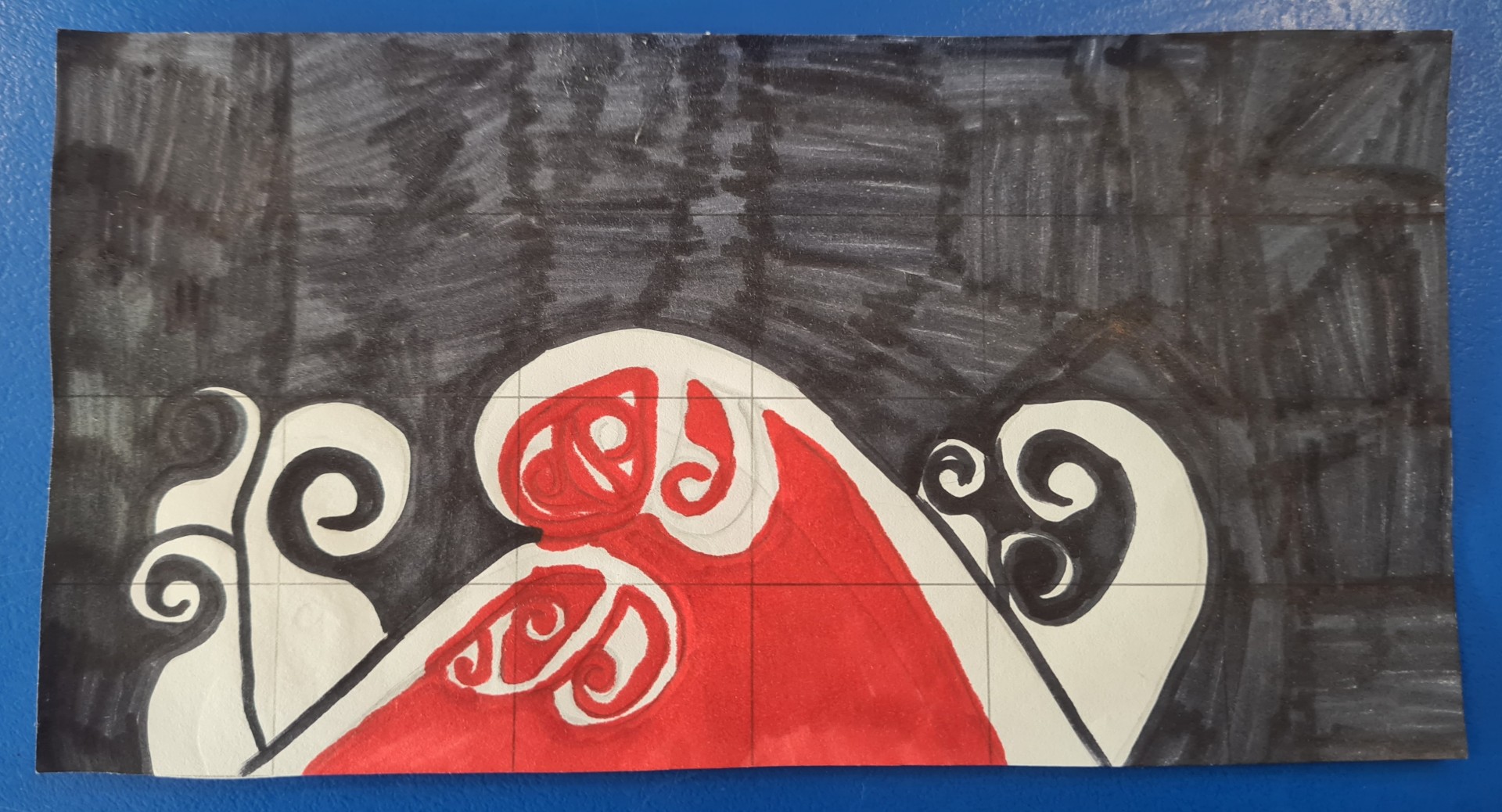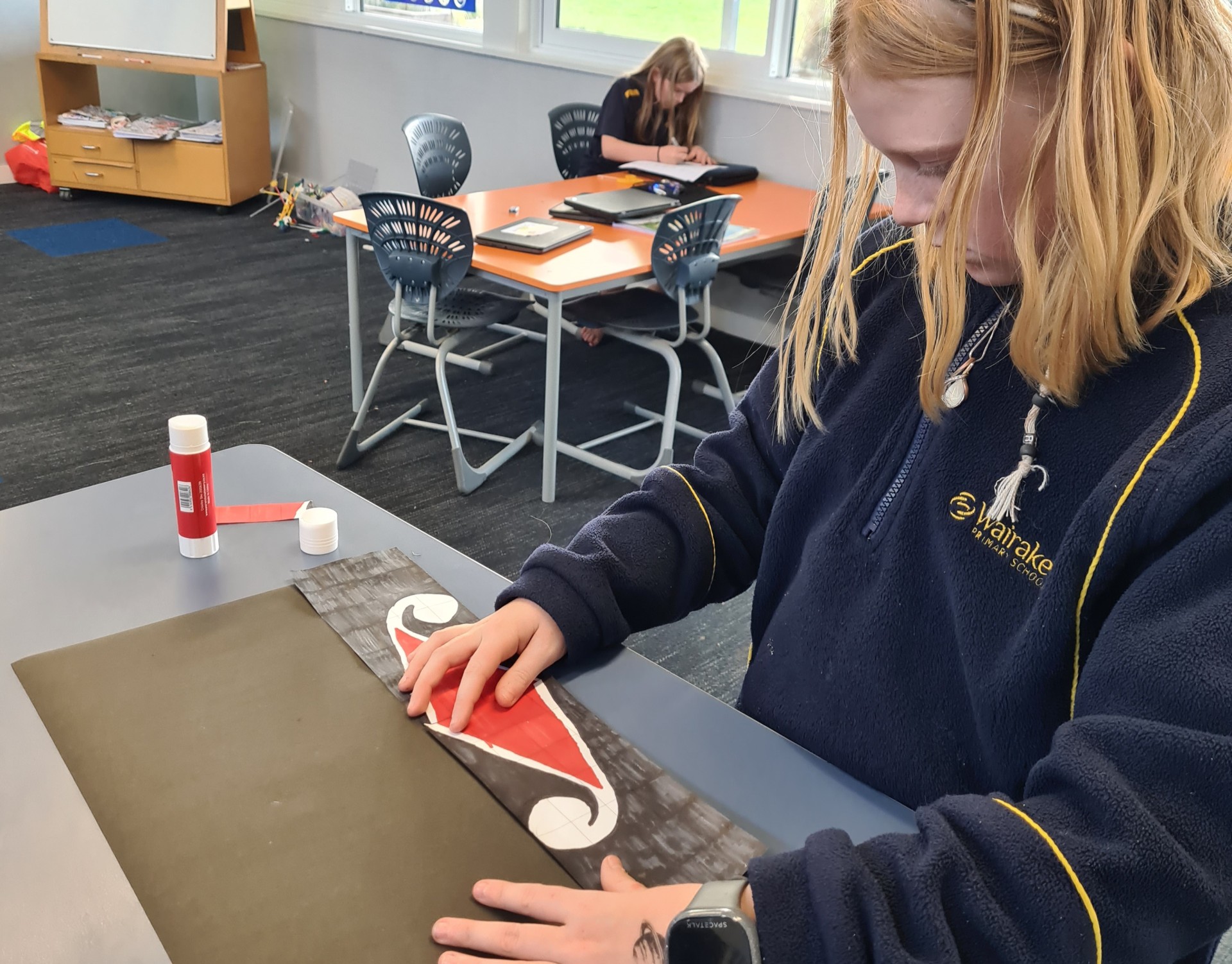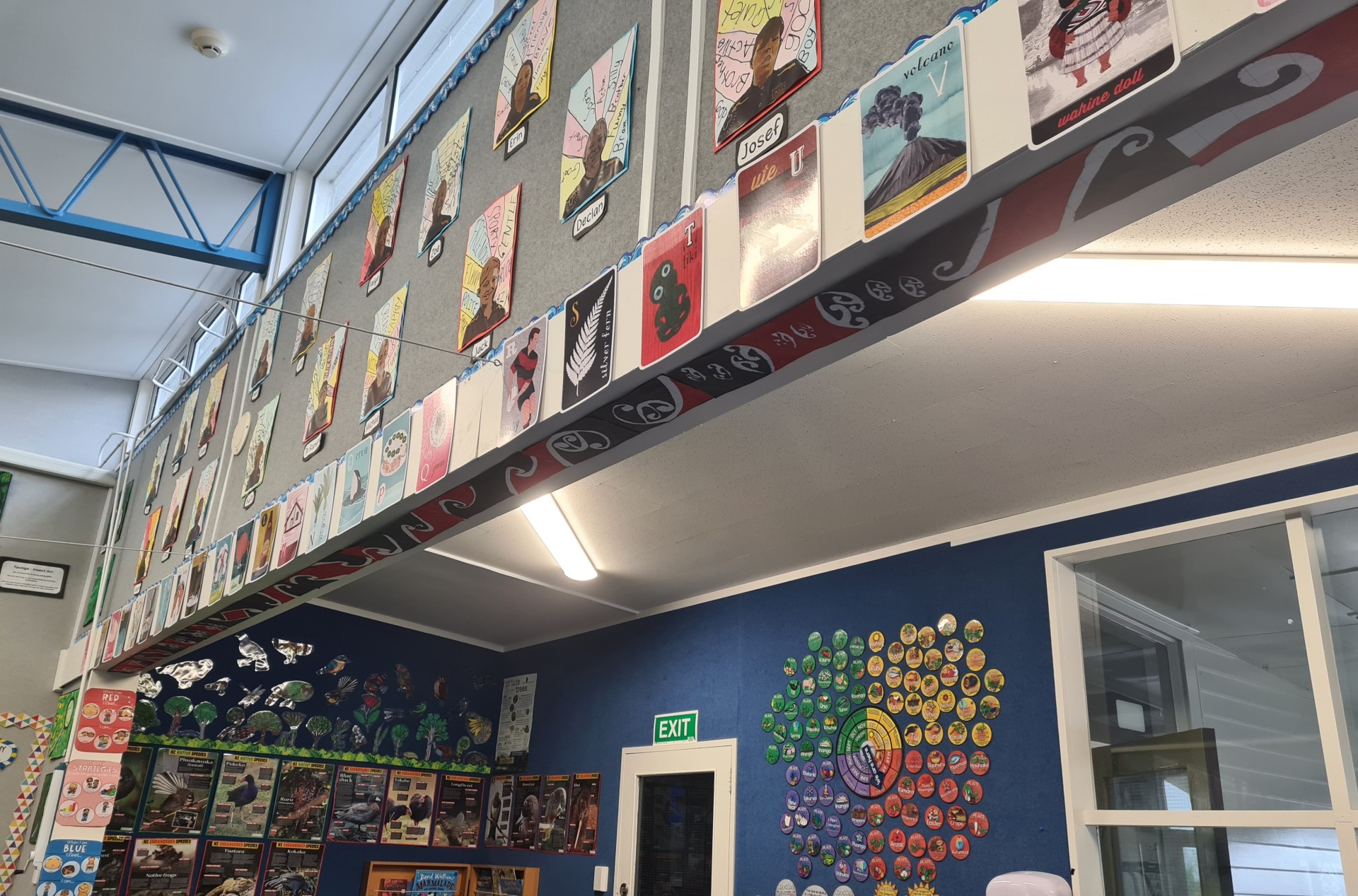Kowhaiwhai patterns are Māori decorative designs, traditionally found on whare rafters and waka paddles. They feature intricate and repetitive designs, which carry a unique meaning and tell a story. To begin our learning, we explored some of the traditional shapes and elements found on kowhawhai patterns. We looked at examples of traditional panels, and discussed the meaning of different motifs and patterns.
In mathematics, we had been learning about the three fundamental types of transformation: rotation, reflection and translation. We explored how these transformations affect shapes, patterns and objects and looked at some examples in everyday life.
With a growing understanding of transformations, we began creating our kowhaiwhai patterns. Armed with pencils and their imaginations, individual students began by outlining their designs on pieces of grid paper. The intricate patterns started to take shape, with each student incorporating unique elements based on the motifs we had learned about. Erin chose a koiri pattern for her design, symbolising nature and self reflection. Lilly chose to add elements of rauru patterns with two koru merging, symbolising a journey of learning.
Once the initial outlines were complete, it was time to bring the kowhaiwhai patterns to life. Using red and black markers, students filled their designs, paying attention to balance and contrast. This was a careful process for students like Samuel and Stanley who had created detailed and intricate patterns.
Next came the transformative aspect of the project. Each student selected a particular transformation technique to apply to their patterns. Some chose rotation, turning their designs. Others chose reflection, flipping their patterns horizontally. And finally, some students translated their patterns, shifting their designs to the left or right. Sam G translated his koru pattern to great effect, while Paddy and Declan chose to rotate their koiri designs.
I rotated my pattern by turning it
I moved my design across, so the pattern was translated
My pattern is reflected because it is flipped
In the spirit of teamwork and collaboration, our kowhaiwhai patterns were combined to make one large panel that was displayed in the classroom.





Comments are disabled for this post.